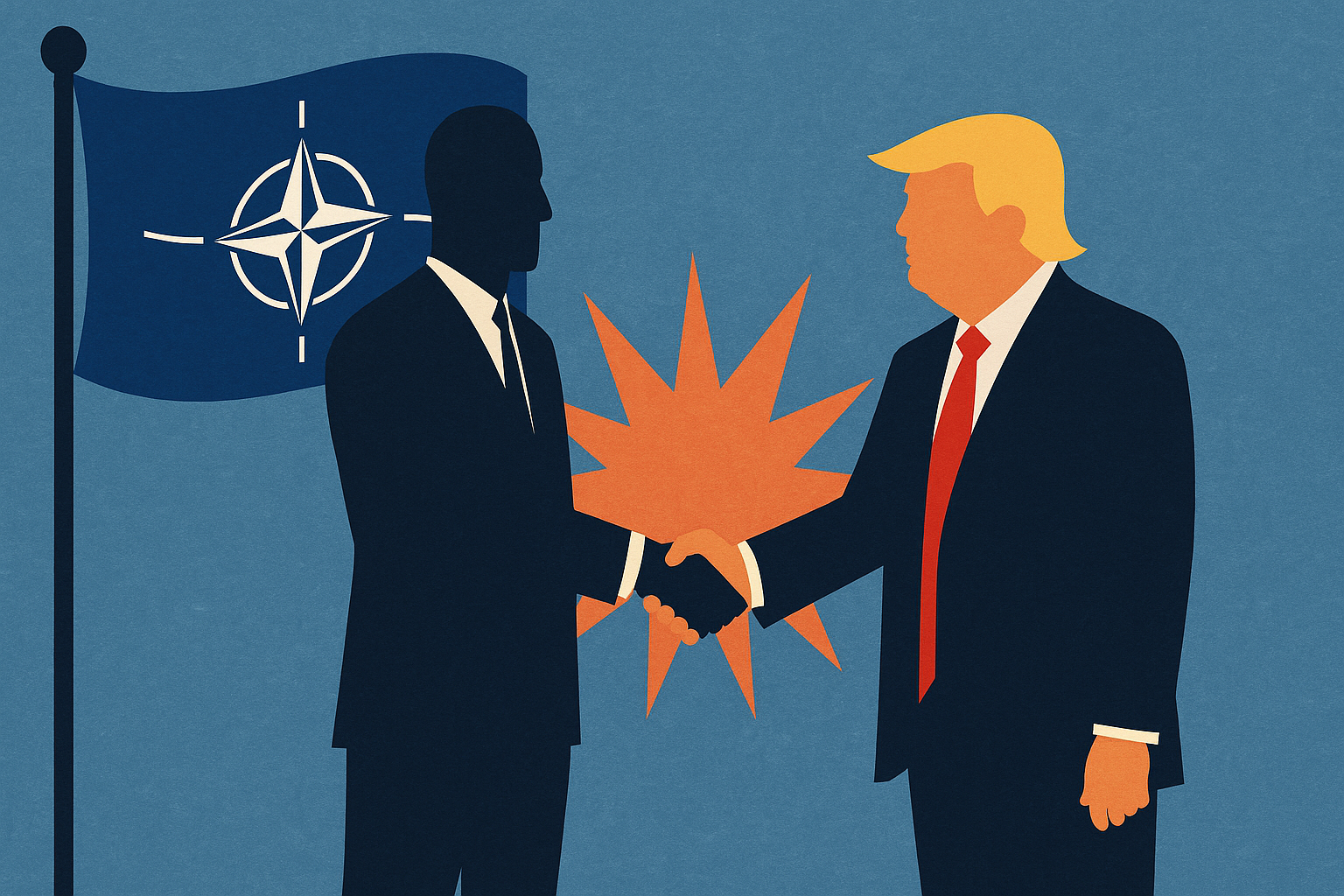NATO Secretary-General Mark Rutte emerged from the latest summit with a key diplomatic win: U.S. President Donald Trump, long skeptical of NATO’s relevance and cost, publicly reaffirmed his commitment to the alliance. The breakthrough followed a series of strategic moves and tense moments as leaders of the 32 NATO member states convened to demonstrate unity and address global threats, particularly from Russia.
A 5% Defense Spending Pledge to Appease Trump
The headline announcement from the summit was the alliance-wide pledge to spend 5% of GDP on defense, a significant increase aimed at addressing U.S. concerns over burden-sharing. The move was widely interpreted as a direct response to Trump’s repeated threats to disengage from NATO unless European allies increased their military contributions.
On his way to The Hague, however, Trump reignited concerns by questioning the definition of NATO’s Article 5 — the collective defense clause. This triggered intense speculation about whether the summit would end in chaos or consensus.
Adding to the drama, Trump publicly shared private text messages from Rutte, sparking debate among officials about the appropriateness of the communication and whether Rutte knew they would be posted.
Behind the Scenes: Diplomacy and Divide
The summit’s success was far from guaranteed. Spain broke ranks, securing an exemption from the 5% defense target, which risked undermining the unity NATO sought to display. Trump took notice, later threatening Spain with increased tariffs under a potential U.S.–EU trade deal. Despite the tensions, diplomatic efforts smoothed the atmosphere.
A private dinner with the Dutch royal family and warm receptions from European leaders helped shift Trump’s mood. While some attendees criticized Rutte’s excessive praise — including referring to Trump as “Daddy” — officials confirmed it helped keep Trump engaged and cooperative.
By the summit’s conclusion, Trump declared NATO “not a rip-off” and praised its “tremendous” progress. He even voiced support for Ukrainian President Volodymyr Zelenskyy, while bluntly urging Russian President Vladimir Putin to end the war in Ukraine.
Criticism: A Hollow Victory?
Despite avoiding a public rupture, not all observers were convinced of NATO’s strength. Jim Townsend, former U.S. Deputy Assistant Secretary of Defense for NATO Policy, criticized the summit’s final communiqué, arguing it lacked political courage.
“It doesn’t demonstrate the strength of its convictions. It comes across as cowardly,” he told the Financial Times.
Broader Developments in the Background
- Zohran Mamdani’s surprise victory in New York’s mayoral primary has energized Democrats, while Wall Street searches for a centrist alternative.
- Trump suggested he may nominate a new Federal Reserve chair early, prompting a dip in the U.S. dollar to a three-year low.
- The U.S. is expected to resume nuclear negotiations with Iran, with Trump hinting at a potential agreement.
- The administration is pushing its “big, beautiful bill” to reduce national debt and win over Senate fiscal conservatives.
- Brent crude oil prices dropped sharply after Iran retaliated against U.S. forces, as traders concluded the escalation would de-escalate rather than intensify regional conflict.
Strategic Calculations and Global Reactions
Trump’s handling of the Israel–Iran conflict, which he dubbed the “12-day war,” is being framed as a turning point in Middle East dynamics. Analysts say the U.S. airstrikes on Iran’s nuclear infrastructure signal that Trump is far from the isolationist he portrays himself to be.
Meanwhile, experts argue that Iran, while possibly accepting temporary restrictions, is unlikely to surrender its enrichment capabilities — a key sticking point in nuclear talks.
Conclusion
The NATO summit concluded with Trump’s endorsement secured, a defense spending pledge on the table, and the alliance momentarily unified. However, internal dissent, diplomatic theatrics, and strategic ambiguity highlight the delicate balancing act required to keep the U.S. engaged. As new geopolitical flashpoints emerge, NATO’s ability to present a united and resolute front will continue to be tested.


